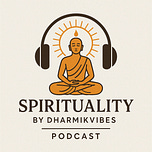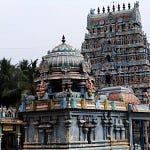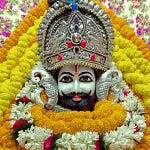The month of Kartik Maas is often called the “king of all months” in Hindu tradition. It is the most sacred period of the year, dedicated to Lord Vishnu, Lord Shiva, and Goddess Tulsi, and marked by deep devotion, simplicity, and illumination.
In 2025, Kartik Maas begins on Wednesday, October 8 and concludes on Wednesday, November 5. Spanning nearly 29 days, this month is filled with rituals, fasting, charity, prayers, and major festivals like Diwali, Govardhan Puja, Tulasi Vivaha, and Kartik Purnima (Dev Deepawali).
This sacred period falls in the Shukla Paksha (bright fortnight) and Krishna Paksha (dark fortnight) of the lunar month of Kartik - aligning roughly with October and November in the Gregorian calendar.
The Spiritual Significance of Kartik Maas
Kartik is considered dear to Lord Vishnu, who is believed to awaken from his cosmic sleep (Yoganidra) on Prabodhini Ekadashi after four months of rest during Chaturmas. His awakening marks the end of the monsoon and the beginning of an auspicious cycle of life, renewal, and divine grace.
Scriptures such as the Padma Purana, Skanda Purana, and Narada Purana praise Kartik as the most powerful time for penance and worship. The Padma Purana states:
“Among all months, Kartik is most beloved to Lord Vishnu. Even a small act of devotion in this month yields immense fruit.”
Thus, every spiritual act - from lighting a single lamp to reciting a single verse -is believed to bring blessings multiplied many times over.
Kartik is also sacred to Lord Shiva, who is worshipped with equal devotion. In some traditions, this month represents the unity of Vishnu and Shiva - the sustainer and the transformer - harmonizing creation and dissolution.
Mythological Origins
The sanctity of Kartik Maas is rooted in several legends:
Lord Vishnu’s Awakening:
According to Puranic texts, Vishnu sleeps in the cosmic ocean (Kshira Sagara) from Ashadha Shukla Ekadashi until Kartik Shukla Ekadashi (known as Prabodhini Ekadashi). On this day, he awakens, marking the beginning of auspicious rituals, marriages, and new ventures.The Tulsi Legend:
The holy basil plant, Tulsi, is worshipped throughout this month. The legend tells of Vrinda, a devoted wife who was later transformed into Tulsi. Lord Vishnu promised her that she would be worshipped eternally, and her symbolic wedding to Vishnu (Tulasi Vivaha) would be celebrated each Kartik.Kartikeya and the Victory of Dharma:
In some South Indian traditions, Kartik Maas is associated with Lord Kartikeya (Murugan), symbolizing the triumph of righteousness over evil, and the path of discipline over desire.
Core Observances During Kartik Maas
1. Kartik Snan (Holy Bathing Ritual)
The early morning Kartik Snan is perhaps the most renowned practice of this month. Devotees bathe before sunrise in sacred rivers such as the Ganga, Yamuna, Godavari, Narmada, or Sarayu, or in clean water at home if unable to travel.
It is believed that such a bath purifies not only the body but also the soul, washing away sins and karmic burdens.
Many devotees also take the Deepdaan Snan at dawn, placing small oil lamps in the water as offerings to Surya and Vishnu.
2. Deep Daan (Offering of Lamps)
Lighting lamps throughout the month is one of the most auspicious acts. Lamps are placed in temples, near the Tulsi plant, at riverbanks, and crossroads. The flame represents enlightenment, removing darkness from one’s life.
Each evening, devotees light five, seven, or eleven lamps, often made of clay and filled with ghee or sesame oil. The act of Deep Daan is believed to bring prosperity and peace to one’s home and ancestors.
3. Tulasi Puja and Tulasi Vivaha
Tulsi is considered a manifestation of Goddess Lakshmi and a symbol of purity. Devotees water and worship the Tulsi plant daily during Kartik Maas, often decorating it with flowers and lighting lamps beside it.
The Tulasi Vivaha, performed between Prabodhini Ekadashi and Kartik Purnima, symbolizes the divine union of Lord Vishnu (in the form of Shaligram) and Goddess Tulsi. This marks the end of the monsoon season and the beginning of the Hindu marriage season.
4. Fasting, Austerity, and Charity
Many devotees undertake fasting on Ekadashi, Purnima, or throughout the entire month. They abstain from grains, onion, garlic, and meat, following a satvik diet.
Charity (daan) holds immense importance in Kartik. Donating lamps, food, clothes, or gold during this month is said to free one from suffering and invite lasting blessings. Even a small act of kindness performed in Kartik is considered to yield great merit (punya).
5. Scripture Reading and Chanting
Devotees often read sacred texts like the Bhagavad Gita, Vishnu Sahasranama, or Bhagavata Purana. Chanting of Vishnu and Krishna mantras — Om Namo Bhagavate Vasudevaya or the Hare Krishna Mahamantra — is considered especially fruitful.
Major Festivals in Kartik Maas 2025
1. Kartik Amavasya - Tuesday, 21 October 2025
This new moon marks an important day for prayers to ancestors and lighting lamps to dispel darkness. It falls just before Diwali, symbolizing the victory of light over ignorance.
2. Diwali - Monday, 20 October 2025
Though primarily associated with the return of Lord Rama to Ayodhya, Diwali also signifies the illumination of inner consciousness and the worship of Goddess Lakshmi.
3. Govardhan Puja / Annakut - Thursday, 23 October 2025
Celebrated the day after Diwali, devotees worship Govardhan Hill, following the example of Lord Krishna, who lifted it to protect villagers from Indra’s wrath. Offerings of various vegetarian dishes are made to honor nature and divine sustenance.
4. Prabodhini Ekadashi - Thursday, 30 October 2025
On this day, Lord Vishnu awakens from Yoganidra, ending the Chaturmas period. Devotees perform special Vishnu pujas, light lamps, and stay awake through the night singing bhajans. It is said that observing this Ekadashi equals the merit of performing a thousand yajnas.
5. Tulasi Vivaha - Between 30 October and 5 November 2025
This festival is observed anytime between Ekadashi and Purnima. The symbolic wedding of Tulsi and Vishnu is performed in homes and temples with great devotion.
6. Kartik Purnima / Dev Deepawali - Wednesday, 5 November 2025
The full moon of Kartik marks the grand conclusion of the month. It is celebrated as Dev Deepawali, the Festival of Lights of the Gods. Devotees believe that all deities descend to Earth on this day.
At the ghats of Varanasi, Prayagraj, Gaya, and Pushkar, millions of lamps are lit, turning the riversides into shimmering seas of light. Bathing in sacred rivers on this morning is said to bestow liberation (moksha).
Spiritual and Astrological Benefits
Divine Blessings:
Kartik is considered the favorite month of Lord Vishnu. Worship during this time invites divine grace, protection, and prosperity.Purification of Karma:
Fasting, prayers, and charity cleanse negative karmic influences, paving the way for inner peace and spiritual advancement.Health and Longevity:
Waking early, bathing in cool water, and simple satvik living during Kartik are believed to improve health and vitality.Emotional Balance:
The discipline of daily rituals and simplicity helps calm the mind and strengthen focus.Path to Liberation (Moksha):
The Puranas declare that even a single act of devotion in Kartik can free the soul from the cycle of rebirth.
How to Observe Kartik Maas
Wake up before sunrise and take a holy bath.
Light lamps every evening near the Tulsi plant and at the home altar.
Offer prayers to Lord Vishnu, Goddess Tulsi, and Lord Shiva.
Keep fasts on Ekadashi, Purnima, or Mondays.
Chant Vishnu mantras or read the Bhagavad Gita daily.
Avoid tamasic foods and negative speech or behavior.
Donate food, clothes, or oil lamps to the needy.
Celebrate Tulasi Vivaha and Kartik Purnima with faith.
Kartik Maas 2025 Calendar - Complete Festivals, Pujas, and Vrats
The holy month of Kartik Maas in 2025 begins on Wednesday, 8 October and concludes on Wednesday, 5 November. It is filled with sacred observances, fasts, and divine celebrations that connect devotees to purity, devotion, and spiritual illumination.
Below is a day-by-day overview of the main events, vrats, and festivals of Kartik Maas 2025:
October 8, 2025 (Wednesday) - Kartik Maas Begins
Beginning of Kartik Maas (Krishna Paksha Pratipada).
Devotees begin Kartik Snan (holy bathing before sunrise).
Start of daily Deep Daan (lighting lamps every evening).
Start of daily Tulsi Puja and Vishnu worship throughout the month.
October 9, 2025 (Thursday) - Sankashti Chaturthi
Dedicated to Lord Ganesha.
Observed by fasting and offering prayers to remove obstacles and bring prosperity.
October 11, 2025 (Saturday) - Kalashtami (Kala Bhairav Jayanti)
Dedicated to Lord Bhairava, a fierce form of Lord Shiva.
Devotees observe fasts and visit Bhairav temples for protection and courage.
October 13, 2025 (Monday) - Ahoi Ashtami
Celebrated by mothers praying for the long life and wellbeing of their children.
Observed with fasting and worship of Goddess Ahoi Mata in the evening.
October 15, 2025 (Wednesday) - Rama Ekadashi (Papankusha Ekadashi)
Fasting dedicated to Lord Vishnu to cleanse sins (papas) and gain spiritual merit.
Observing this vrat during Kartik is considered highly auspicious.
October 17, 2025 (Friday) - Dhanteras (Dhantrayodashi)
Marks the beginning of the Diwali festival.
Devotees worship Lord Dhanvantari and Goddess Lakshmi for health and wealth.
Auspicious day for buying gold, utensils, or new items for the home.
October 18, 2025 (Saturday) - Naraka Chaturdashi / Kali Chaudas
Observed as the day Lord Krishna defeated Narakasura, symbolizing victory of light over darkness.
Ritual oil baths and lighting of lamps are performed early in the morning.
October 20, 2025 (Monday) - Diwali / Deepawali
The festival of lights celebrating the return of Lord Rama to Ayodhya.
Devotees worship Goddess Lakshmi and Lord Ganesha in the evening.
Lamps are lit across homes, temples, and streets, symbolizing the triumph of good over evil.
October 21, 2025 (Tuesday) - Kartik Amavasya
New Moon of Kartik month.
Devotees light lamps and perform Pitru Tarpan for ancestors.
A day of deep meditation and inner reflection before the new lunar cycle begins.
October 22, 2025 (Wednesday) - Govardhan Puja / Annakut Mahotsav
Devotees worship Govardhan Hill and Lord Krishna for protection and abundance.
Large food offerings (Annakut) are made in temples and homes.
October 23, 2025 (Thursday) - Bali Pratipada / Vishwakarma Puja
Marks the victory of Lord Vishnu (in Vamana avatar) over King Bali.
Also celebrated as Vishwakarma Jayanti, honoring the divine architect.
October 25–28, 2025 (Saturday–Tuesday) - Chhath Puja (Surya Shashthi)
Four-day festival dedicated to Surya Dev (Sun God) and Chhathi Maiya.
Involves holy bathing, fasting, and offering Arghya to the rising and setting sun.
One of the grandest festivals of Bihar and eastern India.
October 26, 2025 (Sunday) - Bhanu Saptami
Dedicated to the worship of Surya Dev.
Early morning sun worship brings vitality, good health, and clarity.
October 30, 2025 (Thursday) - Prabodhini Ekadashi / Dev Uthani Ekadashi
Marks the awakening of Lord Vishnu from his four-month cosmic sleep (Yoganidra).
Symbolizes the start of auspicious activities and the Hindu wedding season.
Devotees observe strict fasting, night vigil, and lamp lighting.
Beginning of Tulasi Vivaha period.
October 31, 2025 (Friday) - Vaikuntha Dwadashi / Vishnu Dwadashi
Devotees worship Lord Vishnu and Goddess Lakshmi.
Reading of Vishnu Sahasranama and offering tulsi leaves in prayers is auspicious.
November 1, 2025 (Saturday) - Dwadashi Vrat Parana and Kartik Pradosh Vrat
Parana (breaking of fast) after Ekadashi.
Pradosh Vrat observed in the evening to honor Lord Shiva.
November 2, 2025 (Sunday) - Masik Shivratri (Kartik Krishna Chaturdashi)
Devotees observe fasting and night-long vigil, chanting “Om Namah Shivaya.”
Worshipping Shiva during Kartik Shivratri brings immense merit.
November 3, 2025 (Monday) - Dhanur Sankranti
The Sun enters the zodiac sign of Sagittarius (Dhanu Rashi).
Considered auspicious for offering food and charity.
November 4, 2025 (Tuesday) - Vaikuntha Chaturdashi
Devotees worship both Lord Vishnu and Lord Shiva on this day.
It is believed Vishnu and Shiva visit each other’s temples, symbolizing divine unity.
Observing this vrat grants liberation (moksha).
November 5, 2025 (Wednesday) - Kartik Purnima / Dev Deepawali
The full moon day that marks the grand conclusion of Kartik Maas.
Known as Dev Deepawali, the festival of lights of the gods.
Thousands of lamps illuminate river ghats, especially in Varanasi, Prayagraj, Gaya, and Pushkar.
Bathing in holy rivers at dawn bestows great spiritual merit and liberation.
Devotees also celebrate Guru Nanak Jayanti on this day in Sikh tradition.
End of Tulasi Vivaha period.
Kartik Maas ends after sunset.
Spiritual Summary of Kartik Maas 2025
During this month, devotees engage in:
Kartik Snan: Daily pre-dawn holy bath.
Deep Daan: Lighting lamps every evening.
Tulsi Puja: Daily worship of the sacred basil plant.
Kirtan & Bhajan: Singing hymns of Lord Vishnu and Lord Krishna.
Charity & Daan: Offering food, lamps, and clothes to the needy.
Fasting: On Ekadashi, Mondays, and other sacred tithis.
Reading Scriptures: Bhagavad Gita, Vishnu Sahasranama, and Srimad Bhagavatam.
Devotional Festivals: Diwali, Govardhan Puja, Chhath Puja, Tulasi Vivaha, and Dev Deepawali.
Essence of the Month
Kartik is the month of illumination and surrender. Every sunrise bath, every lamp lit, and every mantra chanted dissolves ignorance and awakens divine awareness. The acts of self-discipline, charity, and devotion performed during this period are believed to grant peace, prosperity, and liberation.
As Kartik Maas 2025 unfolds from 8 October to 5 November, it invites every heart to bathe in the light of faith, the calm of simplicity, and the grace of Vishnu and Shiva -reminding us that the light we seek outside begins within.
The Light Within
Kartik Maas is more than a month of rituals - it is a spiritual journey from darkness to light, ignorance to knowledge, and restlessness to peace. Every dawn bath, every lit lamp, every mantra chanted connects the human heart with the eternal divine rhythm.
As the rivers glow with lamps and the air hums with devotion, Kartik reminds us that true light is not found outside but within. By surrendering ego, serving others, and living in simplicity, we align with the divine current that sustains the universe.
In 2025, as Kartik Maas unfolds from October 8 to November 5, let its sacred light renew faith, purify the heart, and fill every home with peace, love, and divine radiance.











